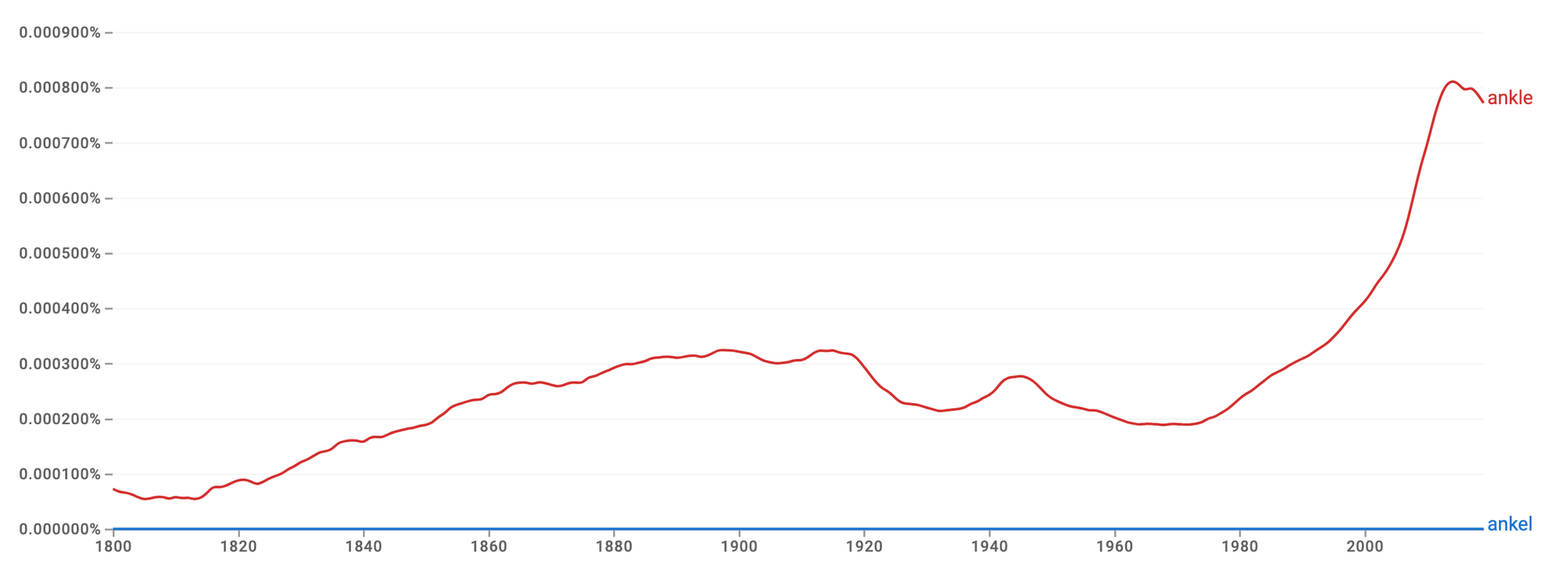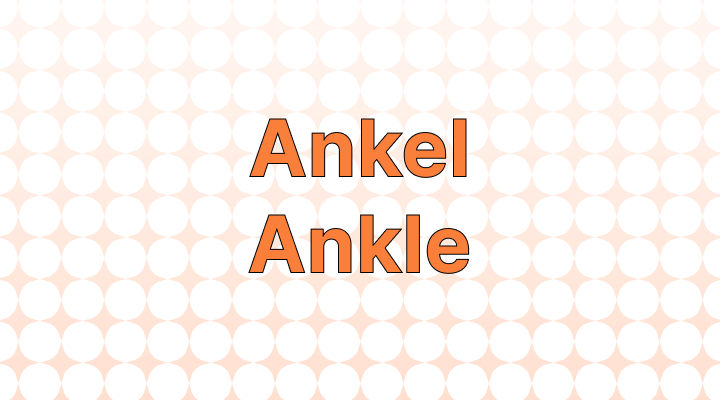- "Ankel" is an incorrect spelling of the word "ankle."
- The "ankle" is the joint between the foot and the leg, connecting the tibia and fibula bones of the lower leg with the talus bone of the foot.
❌ Sarah sprained her ankel while playing soccer, causing pain and swelling in the joint.
✅ Sarah sprained her ankle while playing soccer, causing pain and swelling in the joint.
The ankle, in this context, refers to the joint connecting the foot and the leg which Sarah sprained.
What does "ankle" mean?
Within the human skeletal system, the "ankle" denotes a diarthrodial joint (a freely movable joint) situated between the lower end of the tibia and fibula (bones of the lower leg) and the talus (bone of the foot). Its anatomical structure and function play a vital role in human locomotion and mobility.
The term "ankle" finds application in various contexts, including:
- Anatomy and Physiology: To describe the structure and function of the ankle joint within the human musculoskeletal system.
- Medicine and Orthopedics: In diagnosing and treating injuries and disorders affecting the ankle joint, such as sprains, fractures, and arthritis.
- Biomechanics and Kinesiology: To understand the mechanics of the ankle joint and its role in human movement and performance.
- Dance and Sports: To explain proper foot and ankle positioning in various physical activities for optimal performance and injury prevention.

The use of "ankel" and "ankle" over time
The Ngram graph below shows how often "ankel" and "ankle" have been used from the 1800s to the 2000s. "Ankle" has seen relative steady use until drastically increasing from the 1980s to the 2000s, while its misspelling "ankel" has seen nearly zero use.

How to pronounce "ankle"
In both British and American English, "ankle" is pronounced like "ang·kl".
This is just the standard pronunciation, and there may be slight variations depending on regional accents and individual speech patterns.
Why would we misspell "ankle" as "ankel"?
- Phonetic confusion: The pronunciation of "ankle" and "ankle" is quite similar, and someone might misspell it based on how they perceive the sounds.
- Typo: If someone is typing quickly and the fingers are slightly off the mark, it's possible to hit the adjacent key, resulting in the misspelling "ankel."
Other common misspellings of "ankle"
- ancle
- anckle
- ankell
- ankl
- ancle
Example sentences of the misspelling of "ankle" as "ankel"
- The correct term for the joint connecting the foot and the leg is "ankle," not "ankel."
- When discussing injuries, it's essential to use the correct spelling, so it's "sprained ankle," not "sprained ankel."
- Proper medical documentation should always include accurate terms, such as "fractured ankle," without resorting to the misspelling "fractured ankel."
- In anatomy textbooks, you will find references to the "tibia and fibula meeting the talus bone in the ankle," not in the "ankel."
- Spellcheckers will flag the term "ankel" as an error, reinforcing that "ankle" is the correct spelling.
Example sentences of "ankle"
- The hiker twisted her ankle on the uneven terrain.
- His pants were too short, revealing a tattoo on his ankle.
- Ice and elevation are common remedies for a swollen ankle.
- The ballet dancer gracefully pointed her toes, showcasing her flexible ankles.
- Grandma always warned us to wear sturdy shoes to protect our ankles during outdoor activities.
- A sprained ankle can be quite painful and may require rest and physiotherapy.
- The doctor examined the patient's ankle to determine the extent of the injury.
- Soccer players often use ankle braces to prevent injuries during matches.
- He tied his shoes tightly to provide extra support for his weak ankles.
- The athlete underwent surgery to repair a torn ligament in her ankle.
🖊️ Reley vs. Relay: Which is the Correct Spelling?
🖊️ Sweeped vs Swept: Which is the Correct Spelling?
Synonyms for "ankle"
- Joint
- Articulation
- Talocrural joint
- Tarsal joint
- Hock

Want to sound like a native speaker?
Engram’s AI-powered grammar checker makes your English sound like a native speaker’s, suggesting natural English expressions on top of fixing grammar, spelling, punctuation, word order, and vocabulary.

References:














